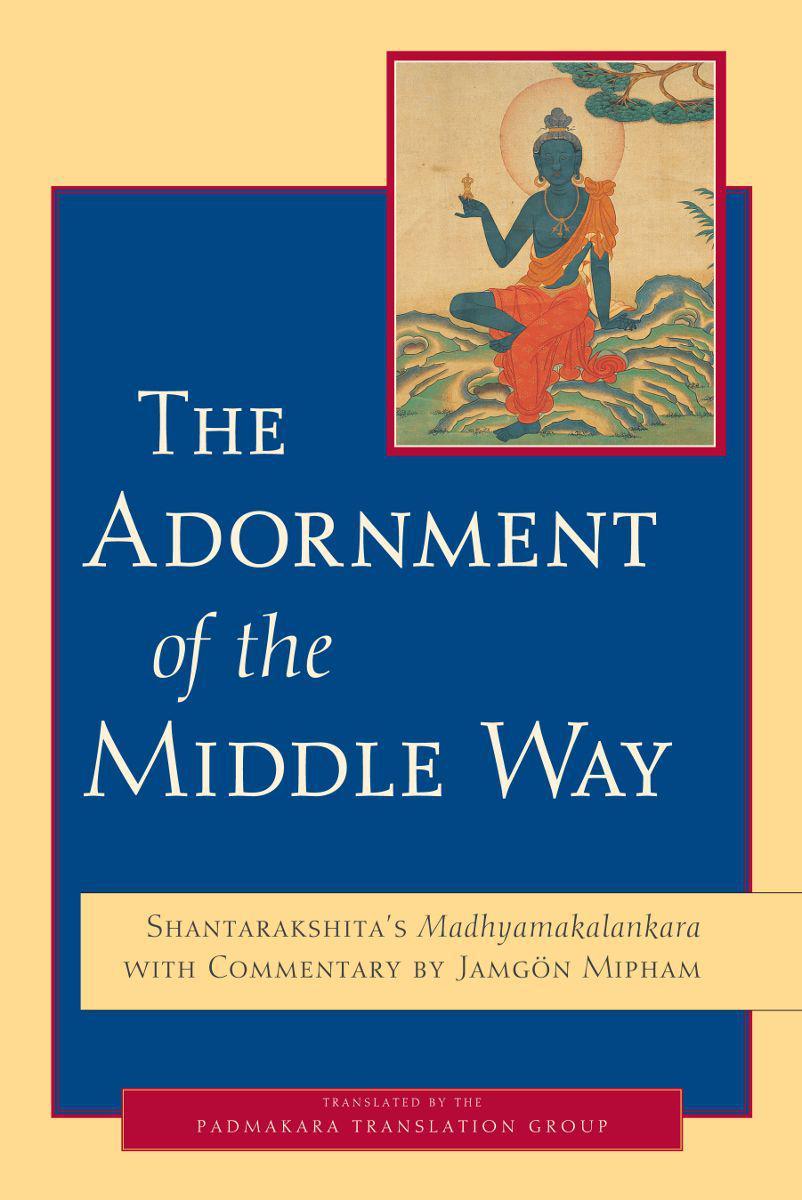The Adornment of the Middle Way: Shantarakshita's <i> Madhyamakalankara </i> with Commentary by Jamgon Mipham

Author:Shantarakshita & Mipham, Jamgon [Mipham, Jamgon]
Language: eng
Format: azw3
Tags: Santaraksita
Publisher: Shambhala Publications
Published: 2012-04-06T03:00:00+00:00
Notes
1. See, e.g., Peter della Santina, Madhyamaka Schools in India (Delhi: Motilal Banarsidass, 1995); T. R. V Murti, The Central Philosophy of Buddhism (London: George Allen & Unwin, 1968); C. W. Huntington Jr., The Emptiness of Emptiness (Delhi: Motilal Banarsidass, 1992); Jeffrey Hopkins, Meditation on Emptiness (Boston: Wisdom Publications, 1996); Chandrakirti and Jamgön Mipham, Introduction to the Middle Way, translated by the Padmakara Translation Group (Boston: Shambhala Publications, 2002).
2. See Dominique A. Messent, “The Yogachara-Svatantrika-Madhyamaka School of Buddhism and Its Influence on rnying-ma Doctrine with Special Reference to Shantarakshita’s Madhyamakalamkara.” (doctoral thesis, University of Bristol, England, 2003), p. 13.
3. See Messent, “Yogachara-Svatantrika-Madhyamaka,” p. 16.
4. See Georges B. J. Dreyfus, Recognizing Reality: Dharmakirti’s Philosophy and Its Tibetan Interpretations (Albany: State University of New York Press, 1997), pp. 33–41; Sara McClintock and Georges Dreyfus, eds., The Svatantrika-Prasangika Distinction: What Difference Does a Difference Make? (Somerville, Mass.: Wisdom Publications, 2003), p. 320.
5. See E. Gene Smith, Among Tibetan Texts: History and Literature of the Himalayan Plateau (Somerville, Mass.: Wisdom Publications, 2001), pp. 227–72.
6. See John W. Pettit, Mipham’s Beacon of Certainty (Somerville, Mass.: Wisdom Publications, 1999), p. 26.
7. Prajnapradipa-mulamadhyamaka-vrtti and Prajnapradipa-tika. Both these texts were translated by Jnanagarbha and Chokro Lui Gyaltsen (cog ro klu’i rgyal mtshan).
8. See also the lta ba’i brjed byang of Rongdzom Pandita (a relevant passage is translated in Pettit, Mipham’s Beacon of Certainty, p. 26).
9. See General Introduction. Some scholars, however, identify Chapa as a Vaibhashika in his epistemological theory. See Dreyfus, Recognizing Reality, p. 115.
10. In fact, Bhavya never mentions Buddhapalita by name. The latter is identified, however, by Avalokitavrata in his subcommentary to Bhavya’s work. The commentary of Buddhapalita was rendered into Tibetan by the same scholars who translated the texts of Bhavya and Avalokitavrata.
11. See William L. Ames, “Bhavaviveka’s Own View of His Differences with Buddhapalita,” in The Svatantrika-Prasangika Distinction (see note 4).
12. This is an adumbration of a quite complex situation. Bhavya holds that the consequential arguments of Buddhapalita are not on the same footing as those of Nagarjuna. In both cases, the consequences imply negations that could theoretically be formulated as positive (syllogistic) arguments. The difference between them is that, given what is known to be Nagarjuna’s intention (the negation of all four positions of the tetralemma), his negations are to be understood as nonimplicative. But such a concession is not to be granted to the commentator, whose task is to render explicit to the fullest extent the obscurities of the commented text. If the commentator uses consequences (unaccompanied by any positive and clarificatory statement), the resulting negations cannot automatically be regarded as nonimplicative. On the contrary, they are implicative and therefore undesirable in the Madhyamaka context. See The Svatantrika-Prasangika Distinction (see note 4), p. 54. It is worth noting that it is in Bhavya that the important distinction between implicative and nonimplicative negations first appears.
13. The Tarkajvala, or Blaze of Reasoning, is Bhavya’s autocommentary to his independent work on Madhyamaka called the Madhyamakahrdaya-karika. Both these works were translated into Tibetan by Dipamkarasrijnana (Atisha) and Tsultrim Gyalwa (tshul khrims rgyal ba) at the beginning of the New Translation period.
Download
This site does not store any files on its server. We only index and link to content provided by other sites. Please contact the content providers to delete copyright contents if any and email us, we'll remove relevant links or contents immediately.
The Way of Zen by Alan W. Watts(6292)
Ego Is the Enemy by Ryan Holiday(4963)
The Art of Happiness by The Dalai Lama(3851)
The Book of Joy by Dalai Lama(3708)
Why Buddhism is True by Robert Wright(3291)
Spark Joy by Marie Kondo(3090)
Shift into Freedom by Loch Kelly(3032)
Happiness by Matthieu Ricard(2890)
A Monk's Guide to a Clean House and Mind by Shoukei Matsumoto(2787)
The Lost Art of Good Conversation by Sakyong Mipham(2444)
The Meaning of the Library by unknow(2391)
The Third Eye by T. Lobsang Rampa(2174)
The Unfettered Mind: Writings from a Zen Master to a Master Swordsman by Takuan Soho(2160)
Red Shambhala by Andrei Znamenski(2074)
Anthology by T J(2049)
The Diamond Cutter by Geshe Michael Roach(1957)
Thoughts Without A Thinker: Psychotherapy from a Buddhist Perspective by Epstein Mark(1899)
Advice Not Given by Mark Epstein(1767)
Twilight of Idols and Anti-Christ by Friedrich Nietzsche(1764)
